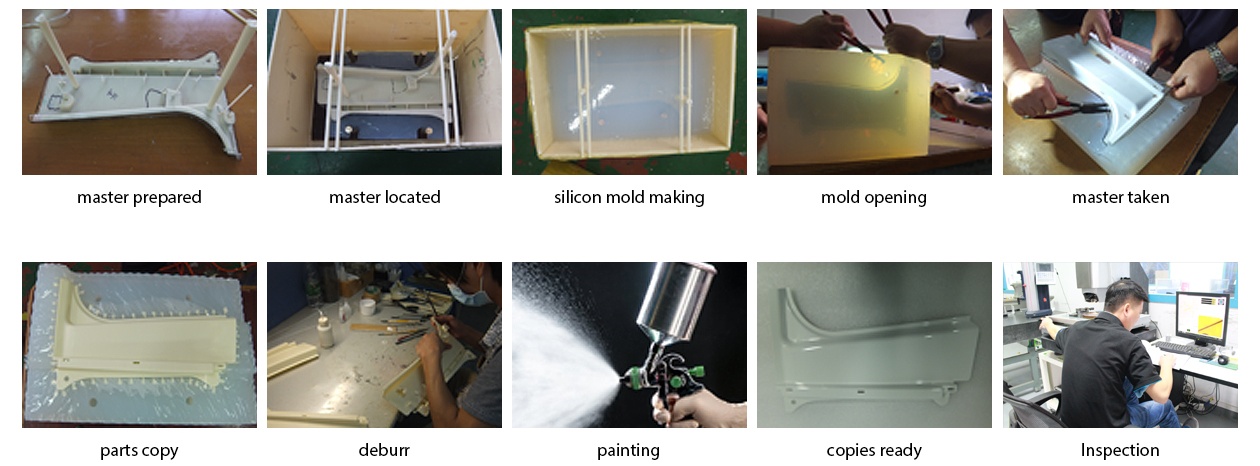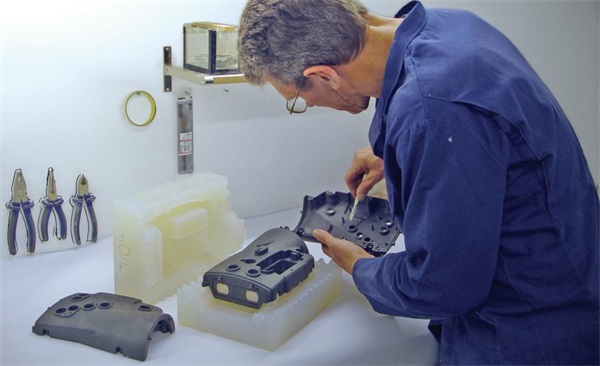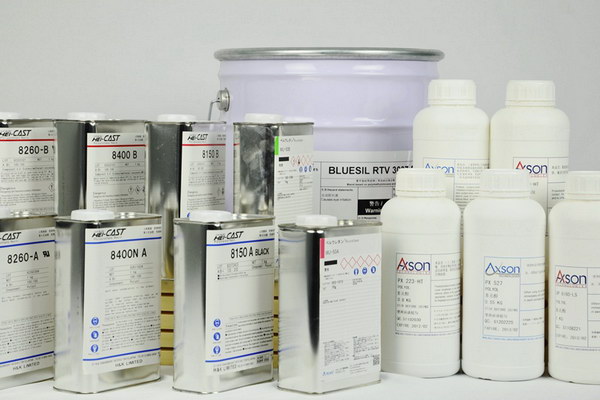Vacuum Casting - Diversities Materials Selection
People also call vacuum casting urethane casting or polyurethane casting, a manufacturing process that uses silicone molds to make low-volume plastic and rubber components under vacuum. Due to the flexibility of silicone, it is a highly adaptable process to produce complex parts with undercuts in polyurethane resins and cast nylon. Vacuum casting is popularly used in rapid prototype manufacturing for some parts that need small volumes and no special requirements for the product's materials.

Vacuum Casting Process at TEAM Rapid
Vacuum casting is a process whereby you use a vacuum environment to draw the liquid material into the silicone mold and solidified in the casting vacuum machine. This process allows you to create plastic-based complex components for your product prototypes. It is one of the best alternatives to injection molding, and with this method, you can lower the cost of production in your manufacturing process. However, the process is more suitable for low production volumes.

With injection molding, you will need to use various metal molds to create your prototype objects, but with vacuum casting, you will use silicone molds and a casting vacuum machine. You can use multiple plastic material types for vacuum casting, and each plastic material will produce different results for you. The operational flows of the process:
Step 1: Prepare the master model with 3d printing services or CNC machining. Since the master patterns the casting parts, the master model must be a perfect size and cosmetic.
Step 2: Located and firmed the master model into the proper position of a custom size wooden box.
Step 3: Mix and pour the silicone into the box to create a silicone mold.
Step 4: Split the silicone mold and the parting lines with a knife. This step must be processed carefully and detailed. Anything wrong usually leads to mold damage.
Step 5: Take out the master model, maintain and store the master model well for the subsequent round silicone mold making.
Step 6: Mix and pour the Polyurethane into the silicone mold to do the castings. Casting is under casting vacuum in a vacuum casting machine; the bubbles inside can be vacuumed out.
Step 7: Remove the gate, overflows and flashes on the casting parts.
Step 8: If the parts have post-finish requirements such as painting, silk printing etc., we will process them after deburring.
Step 9: First part copied.
Step 10: First part inspection and quality control during rapid manufacturing. If the first part is OK, then the second, the third etc. repeated under the casting vacuum machine.
Benefits of Vacuum Casting in Rapid Prototyping
Vacuum casting is one of the manufacturers' most effective rapid prototyping methods. It follows the production process that is quite simple to do while helping the manufacturers to lower their production costs. There are also various other benefits of casting in rapid prototyping services, which is why many manufacturers are using this method as an alternative to injection molding. Here are the benefits:
 ● Cost
● Cost
Vacuum cast allows manufacturers to lower production costs while improving their output quality. Compared to the more expensive plastic injection molding service, vacuum casting can give manufacturers plenty of benefits in terms of the overall cost of production. The cost-to-value ratio is excellent with casting.
● Precision
It’s also possible for manufacturers to produce better prototypes using the vacuum caster. The process allows prototype productions that offer more accuracy and precision, which is true to the supplied 3D design.
● Complexity
Another beneficial aspect of the process is that it allows the manufacturers to produce the prototype designs with more complexities by vacuum casting machines. Using the liquid plastic material makes it possible for the vacuum caster to create prototypes with more complex shapes without worrying about incompatibility.
● Material Options
There are various polyurethane plastic materials manufacturers can use in the casting process. Each polyurethane will have unique properties, allowing the manufacturers to pick the best materials based on their production applications, such as a vacuum pot for resin casting.
● Efficiency
It is easy to produce prototypes using the casting method, and the plastic materials are easier to work with than their metal counterparts. The ease of production by vacuum casting machines will provide better efficiency for your prototype production. For manufacturers, using the casting method can help them produce more prototypes in a shorter production time while keeping their production costs within their budget.
Vacuum Casting Materials and Applications
With the development of molecular and material science, vacuum casting materials are diverse. Thermoplastics, rubbers and resins are the three major vacuum casting materials, which can emulate specific properties and characteristics, including degrees of:
 1. Physical appearance quality.
1. Physical appearance quality.
2. Surface texture/finish.
3. Transparency/translucence.
4. Rigidity.
5. Flexibility.
6. Strength.
7. Hardness.
8. Temperature resistance.
9. UV stability.
10. Color.
Commonly Used Vacuum Casting Resins at TEAM Rapid
| Vacuum Casting Material | Comments | Material Code |
| PU ABS | Flame retardant resin (UL94-V0 specification) | Hei-cast 8263 |
| PU Classic ABS | This is the classic and most popular ABS compound. | UP 4280 |
| PU Classic PP | PP resin compound - living hinges possible (typically 30 to 50 bends before breaking) | UP 5690 |
| PU PC | Transparent. Mainly stimulates filled ABS or PC. | PX 527 |
| PU PMMA(Acrylic) | UV stable. Great for glossy, clear parts. Can be tinted or colored. This is classic acrylic substitute. | UPX 5210 |
| PU Rubber | Rubber TPE resin. Variable hardness ranges from 40-85A. Can be over-molded. | UPX 5690 |
| PU Silicone | Translucent silicone that can be used as vacuum casting mold and also for vacuum casting parts. | ESSIL 296 |
Various Uses of Vacuum Casting
Many manufacturers have been using the casting method for various applications. There are multiple uses of vacuum casting for producing prototypes and parts for different products. Here are the various usages:
● Foods and Beverages Prototypes
Manufacturers often use plastic materials for food and beverage prototypes, such as plastic spoons, plastic forks, and other related items, which you can use once and then throw away. These prototypes use the casting method to produce, and with this method, manufacturers can speed up their production using the rapid manufacturing process.
● Consumer Electronics
Plastic prototypes and parts are also common in consumer electronics. Plastic materials are suitable for the outer shell or housing of various electronic products. Polyurethane is the perfect material to house electrical components, as it will keep the users safe from electric currents. Manufacturers use vacuum casting to make the casing or housing for electronic products, such as smartphones, PC, laptops, and many others, in custom low-volume designs.
● Everyday Consumer Products
There are also many consumer products you can find daily that use the vacuum casting method in their production process. These products include eyeglasses, plastic containers, toothbrushes, and many others.
Contact TEAM Rapid
The application of casting parts is massive. We usually depend on the parts' function and application to suggest our customer about materials; UP4280 (ABS-like material), PX521(PC-like material), and UPX8400(Rubber-like material) are some of the most commonly used materials at TEAM Rapid. Ready for your next casting project? Contact our team at [email protected] to get free materials suggestions.




